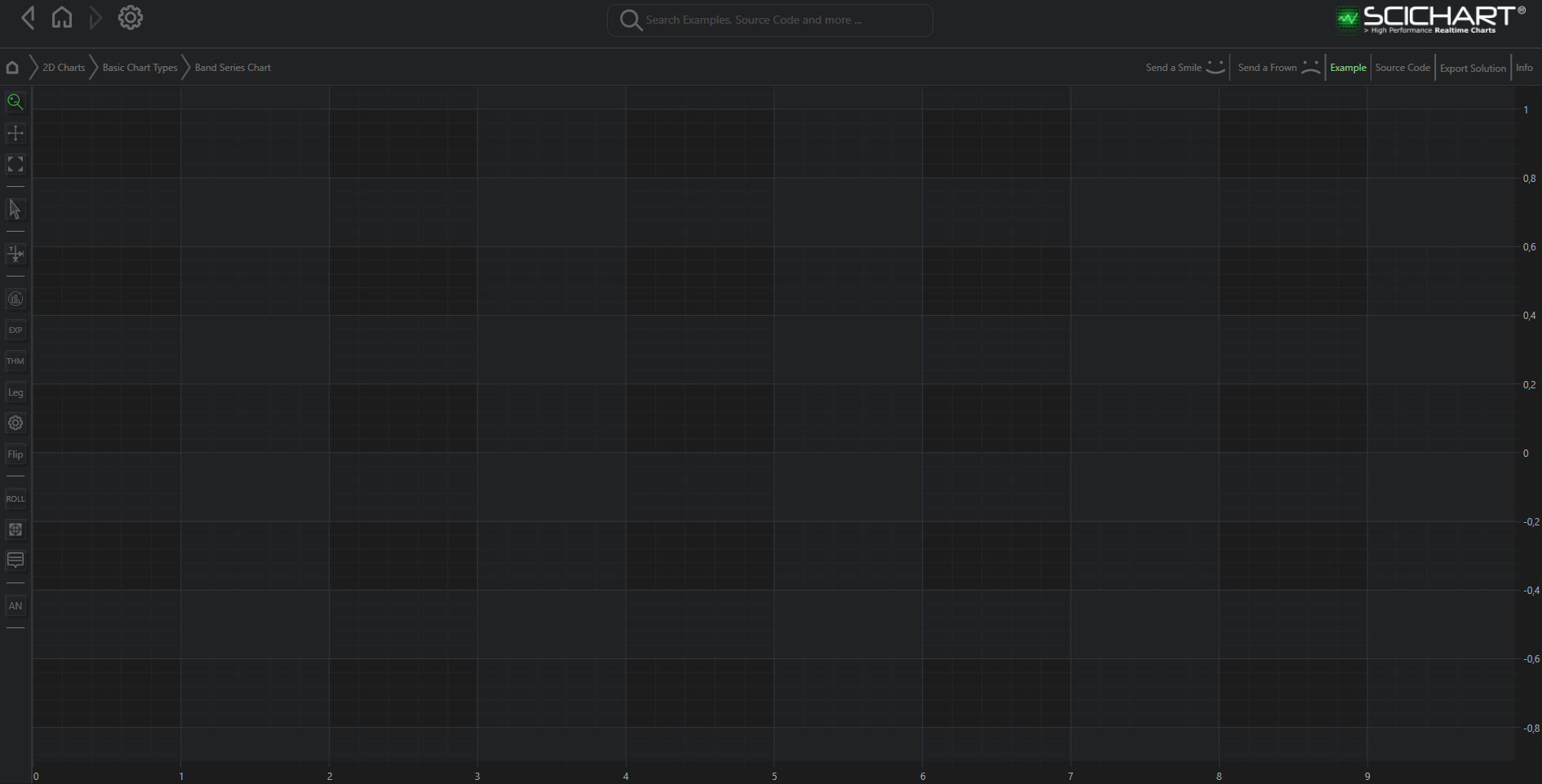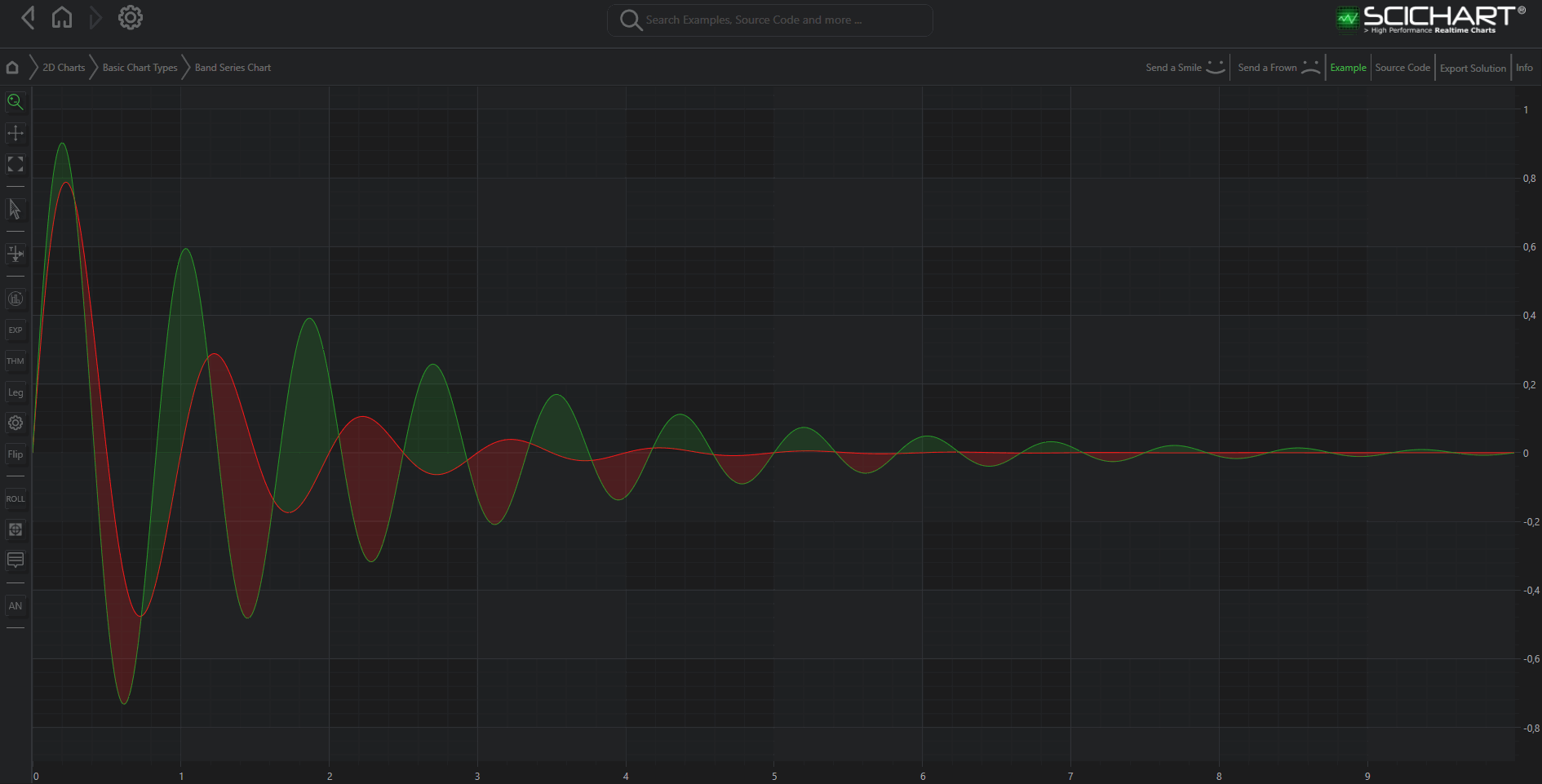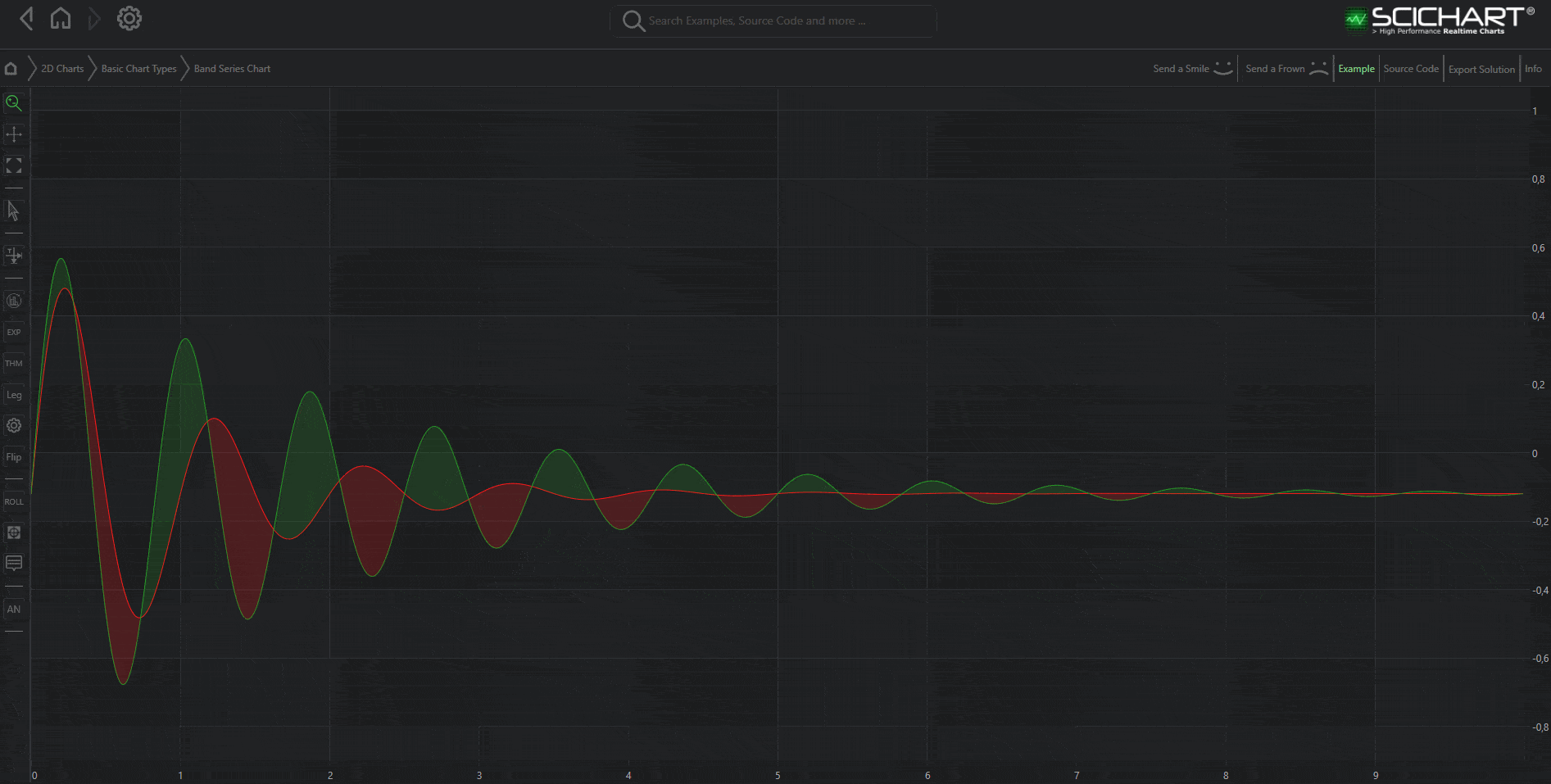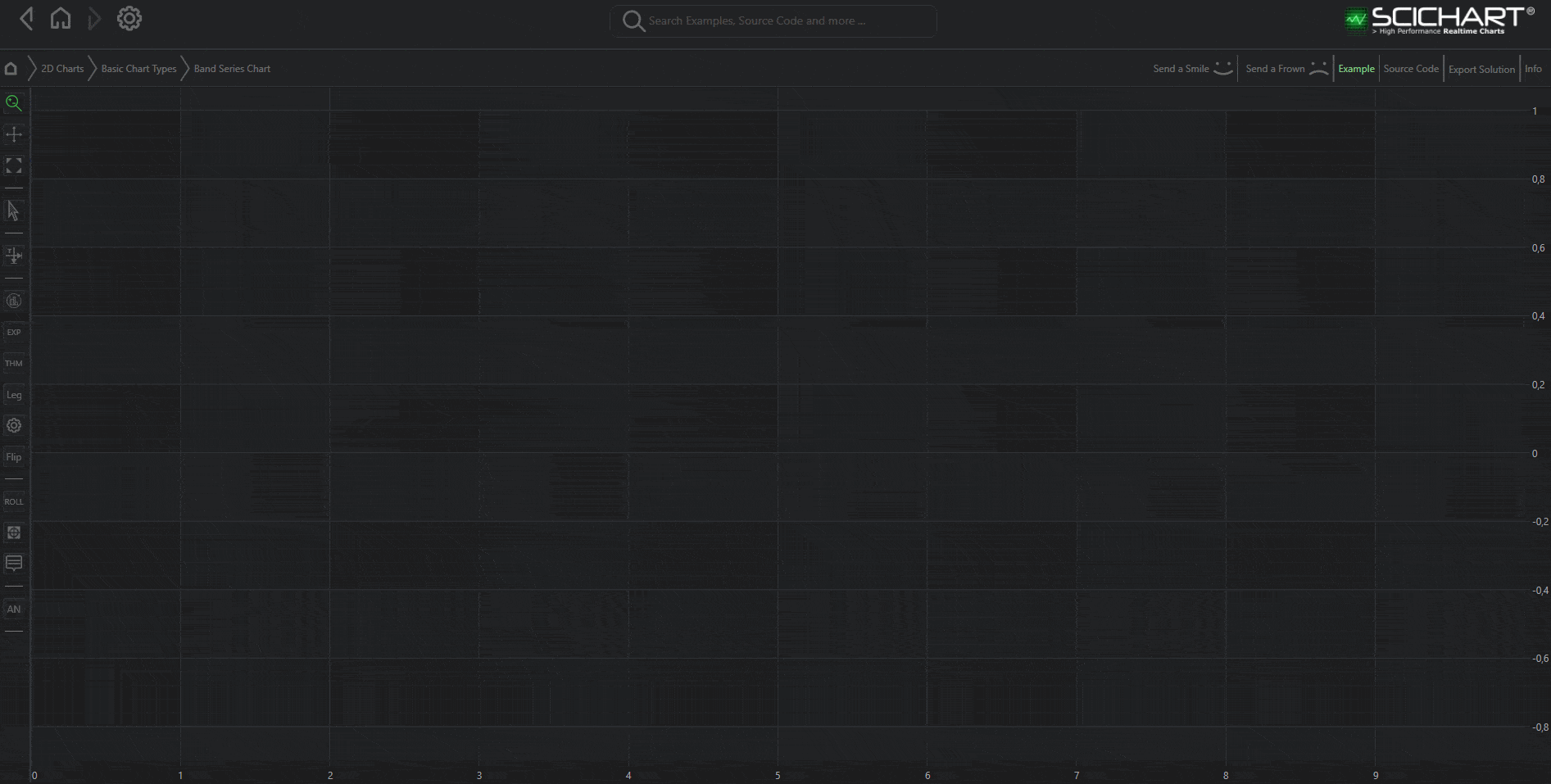In this section we are going to take a closer look at each of the animation types provided out-of-the-box, which can be applied to our WPF Charts. We are going to use the Band Series example as a base to compare show specifics of every one of these.
Examples for the WPF Chart Animations can be found in the SciChart WPF Examples Suite which can be downloaded from the SciChart Website or our SciChart.WPF.Examples Github Repository.
Sweep Animation
SweepAnimation animates the series point by point until it reaches its full length:

Set SweepAnimation in XAML
| SweepAnimation markup |
Copy Code |
|---|---|
<s:SciChartSurface.RenderableSeries> <s:FastBandRenderableSeries Fill="#33279B27" FillY1="#33FF1919" Stroke="#FFFF1919" StrokeY1="#FF279B27"> <s:FastBandRenderableSeries.SeriesAnimation> <s:SweepAnimation Duration="00:00:05"> <s:SweepAnimation.EasingFunction> <CircleEase EasingMode="EaseIn" /> </s:SweepAnimation.EasingFunction> </s:SweepAnimation> </s:FastBandRenderableSeries.SeriesAnimation> </s:FastBandRenderableSeries> </s:SciChartSurface.RenderableSeries> | |
Wave Animation
WaveAnimation animates the top of a series until it reaches its original level in a wave-like manner:

Set WaveAnimation in XAML
| WaveAnimation Markup |
Copy Code |
|---|---|
<s:SciChartSurface.RenderableSeries> <s:FastBandRenderableSeries Fill="#33279B27" FillY1="#33FF1919" Stroke="#FFFF1919" StrokeY1="#FF279B27"> <s:FastBandRenderableSeries.SeriesAnimation> <s:WaveAnimation Duration="00:00:02" PointDurationFraction="0.5" ZeroLine="-0.7" /> </s:FastBandRenderableSeries.SeriesAnimation> </s:FastBandRenderableSeries> </s:SciChartSurface.RenderableSeries> | |
The ZeroLine property specifies a value on an YAxis, which indicates the level from which points that are being animated emerge.
The PointDurationFraction property indicates how long it takes to animate every point in the series in relation to the full animation Duration.
Scale Animation
ScaleAnimation changes the extent of a series until it reaches its full. Unlike the Wave animation, it animates both top and bottom of a RenderableSeries:

Set ScaleAnimation in XAML
| ScaleAnimation Markup |
Copy Code |
|---|---|
<s:SciChartSurface.RenderableSeries> <s:FastBandRenderableSeries x:Name="BandSeries" Fill="#33279B27" FillY1="#33FF1919" Stroke="#FFFF1919" StrokeY1="#FF279B27"> <s:FastBandRenderableSeries.SeriesAnimation> <s:ScaleAnimation Duration="00:00:04" ZeroLine="-0.5"> <s:ScaleAnimation.EasingFunction> <ElasticEase EasingMode="EaseOut" /> </s:ScaleAnimation.EasingFunction> </s:ScaleAnimation> </s:FastBandRenderableSeries.SeriesAnimation> </s:FastBandRenderableSeries> </s:SciChartSurface.RenderableSeries> | |
Fade Animation
FadeAnimation animates the Opacity of a RenderableSeries:

Set FadeAnimation in XAML
| FadeAnimation markup |
Copy Code |
|---|---|
<s:FastBandRenderableSeries Fill="#33279B27" FillY1="#33FF1919" Stroke="#FFFF1919" StrokeY1="#FF279B27"> <s:FastBandRenderableSeries.SeriesAnimation> <s:FadeAnimation> <s:FadeAnimation.EasingFunction> <CircleEase EasingMode="EaseIn" /> </s:FadeAnimation.EasingFunction> </s:FadeAnimation> </s:FastBandRenderableSeries.SeriesAnimation> </s:FastBandRenderableSeries> | |
